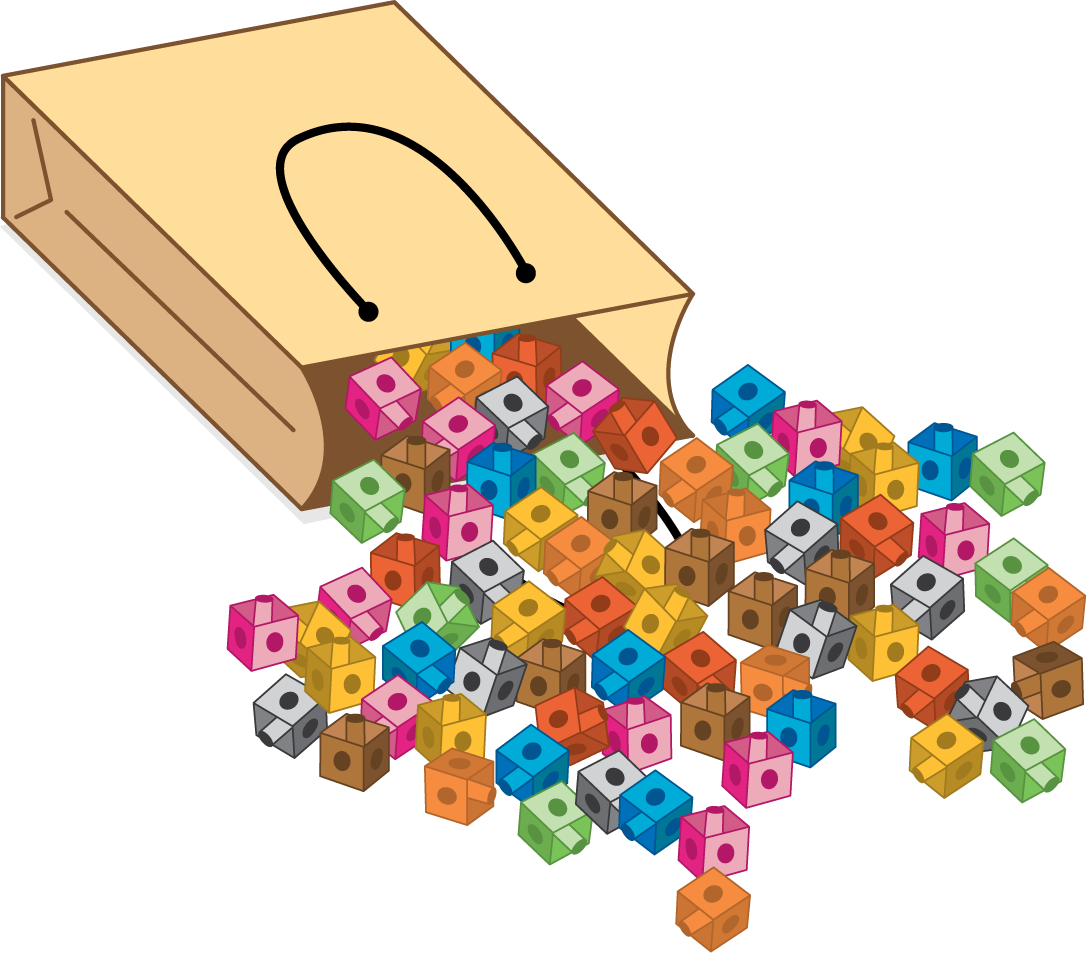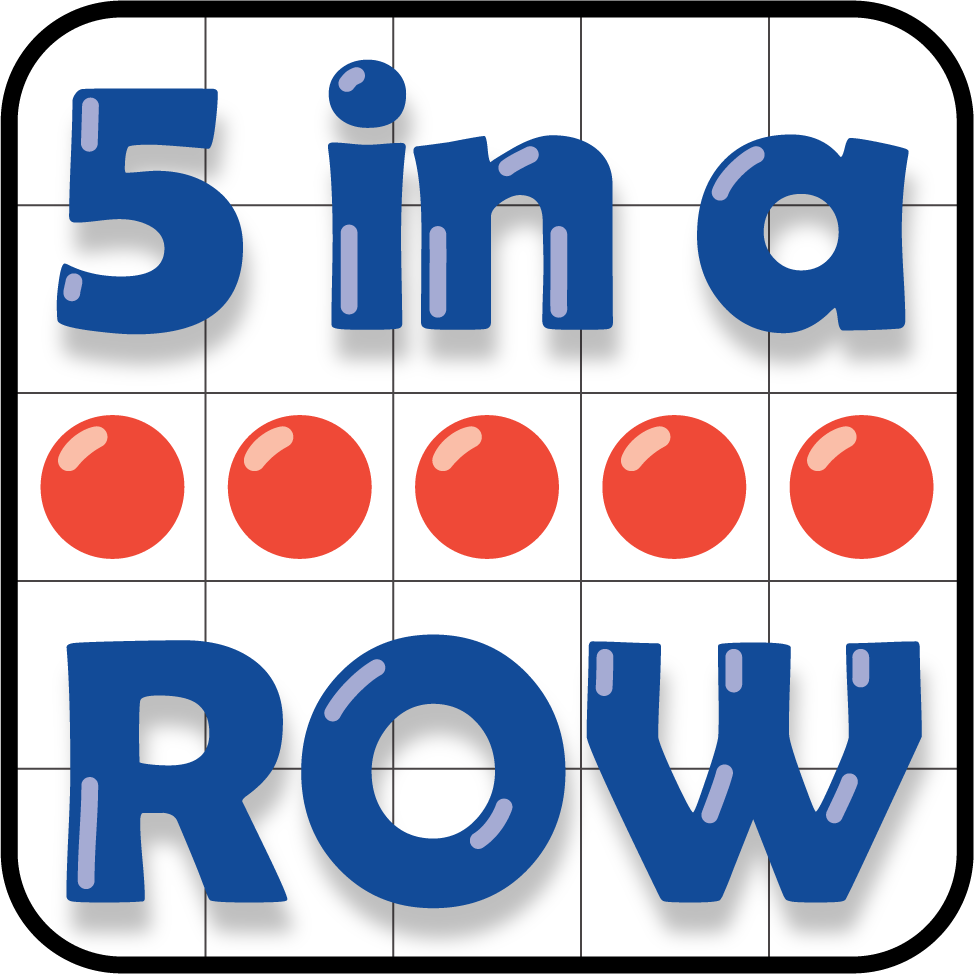Lesson 1
Count Large Collections
Warm-up: Choral Count: Count by 10 (10 minutes)
Narrative
The purpose of this Choral Count is to invite students to practice counting by 10 and notice patterns in the count. These understandings help students develop fluency and will be helpful later in this lesson when students count collections with a number of objects that is a multiple of 10.
In this warm-up, students begin to look for and make use of structure (MP7) when they connect counting by 10 to the patterns they see in the digits of the two-digit numbers.
Launch
- “Count by 10, starting at 30.”
- Record as students count.
- Stop counting and recording at 100, then count back down to 30.
Activity
- “What patterns do you see?”
- 1–2 minutes: quiet think time
- Record responses.
Student Facing

Student Response
For access, consult one of our IM Certified Partners.
Activity Synthesis
- “Who can restate the pattern in different words?”
- “What do you notice about how the numbers change or stay the same as we look down the column?”
Activity 1: Count a Collection (10 minutes)
Narrative
The purpose of this activity is for students to organize and count a collection of 40 objects. Students should have access to double 10-frames, cups, paper plates, or other tools that may help them organize as they count. Students choose how to count their collection and determine how to represent their count. They may:
- count by one.
- count by one, using double 10-frames or other tools to keep track of tens (MP5).
- organize objects into groups of ten and count by ten.
- count by ten and then by one, depending on their comfort with larger numbers.
During the synthesis, students discuss different ways they counted and organized their collections.
Advances: Conversing, Reading
Required Materials
Materials to Gather
Materials to Copy
- Counting Collections Stages 1 and 2 Recording Sheet
Required Preparation
- Each group of 2 students needs one bag of 40 objects.
Launch
- Groups of 2
- Give each group a bag of objects and access to double 10-frames, cups, paper plates, or other tools to help organize a count.
- “You and your partner will get a bag of objects. Your job is to figure out how many are in the bag.”
- Consider asking:
- “How can we make sure both partners are counting?”
- “What might it look like to count together? What might it sound like?”
- “How can we make decisions together about how we count?”
- “How can you be a good math partner?”
- “Work with your partner to count the collection. Each partner will show on paper how many there are and how you counted them.”
Activity
- 5 minutes: partner work time
- As students work, consider asking:
- “How did you count? How many are there?”
- “How can you represent this so someone can see exactly how you counted?”
- “Tell me about what you have written here. How many does it show?”
- “Does your representation match how you counted?”
- Monitor for students who:
- count all, one object at a time.
- group into tens using an organizational tool, then count.
Student Response
For access, consult one of our IM Certified Partners.
Activity Synthesis
- Invite previously identified students to share.
- “How are the ways they organized the same and different?” (One student moved the ones they had counted to one side of the space. The other student put groups of ten on each plate to help them count.)
Activity 2: Count More Than One Collection (15 minutes)
Narrative
The purpose of this activity is for students to practice counting and representing collections with multiples of 10 objects. Students count one bag with their partner. When students have finished counting and recording, they trade bags with a different group and count a new collection. During the launch, teachers may choose to provide time for students to reflect on how they worked together in the previous activity. During the synthesis, students discuss using a tool that organizes the objects in groups of ten, and how that is helpful when counting a collection.
Bags B–D will be used again in a future lesson in this unit.
Supports accessibility for: Organization, Attention
Required Materials
Materials to Gather
Required Preparation
- Each student will need the blackline master from the previous activity.
- Create 1 set of the following 6 bags of objects for each group of 12 students:
- Bag A: 20 objects
- Bag B: 40 objects
- Bag C: 50 objects
- Bag D: 60 objects
- Bag E: 30 objects
- Bag F: 10 objects
Launch
- Groups of 2
- Give each group a bag of objects. Give students access to double 10-frames, cups, paper plates, or other tools to help organize a count.
- “Now you will work with your partner to count more collections. Each partner will show on paper how many there are and show how you counted.”
Activity
- 5 minutes: partner work time
- “Switch bags with another group. Work with your partner to count the collection. Each partner will show on paper how many there are and show how you counted them.”
- 5 minutes: partner work time
- As students work, consider asking:
- “How can you use what we learned in the last activity to help you organize your count?”
- “Tell me about what you have written here. How many does it show?”
- “Does your representation match how you counted?”
- Monitor for students who:
- organize objects into groups of ten using cups, paper plates, or other tools.
- group using double 10-frames.
Student Response
For access, consult one of our IM Certified Partners.
Advancing Student Thinking
If students count each collection by one, consider asking:
- “Can you explain how you counted your collection?”
- “How can the double 10-frame help you count the collection?”
Activity Synthesis
- Invite previously identified students to share.
- “How did they use tools to help them count?” (With tools you don’t need to count every object, you can just use the 10-frame to organize 10 and then count how many tens there are.)
Activity 3: Centers: Choice Time (15 minutes)
Narrative
The purpose of this activity is for students to choose from activities that offer practice adding and subtracting within 20. Students choose from any stage of previously introduced centers.
- How Close?
- Five in a Row
- Number Puzzles
Required Materials
Materials to Gather
Required Preparation
- Gather materials from previous centers:
- How Close, Stages 1 and 2
- Five in a Row, Stages 1-3
- Number Puzzles, Stages 1 and 2
Launch
- Groups of 2
- “Now you are going to choose from centers we have already learned.”
- Display the center choices in the student book.
- “Think about what you would like to do.”
- 30 seconds: quiet think time
Activity
- Invite students to work at the center of their choice.
- 10 minutes: center work time
Student Facing
Choose a center.
How Close?

Five in a Row

Number Puzzles

Activity Synthesis
- Display 4, 8, 5, 9.
- “Diego is playing How Close, Subtract from 20. Should he choose two or three of these numbers to subtract? Which numbers should he choose?”
Lesson Synthesis
Lesson Synthesis
“Today we counted different collections of objects. Each collection had a lot of objects. What are some different ways we organized the objects to help us count?”
Cool-down: Unit 4, Section A Checkpoint (0 minutes)
Cool-Down
For access, consult one of our IM Certified Partners.